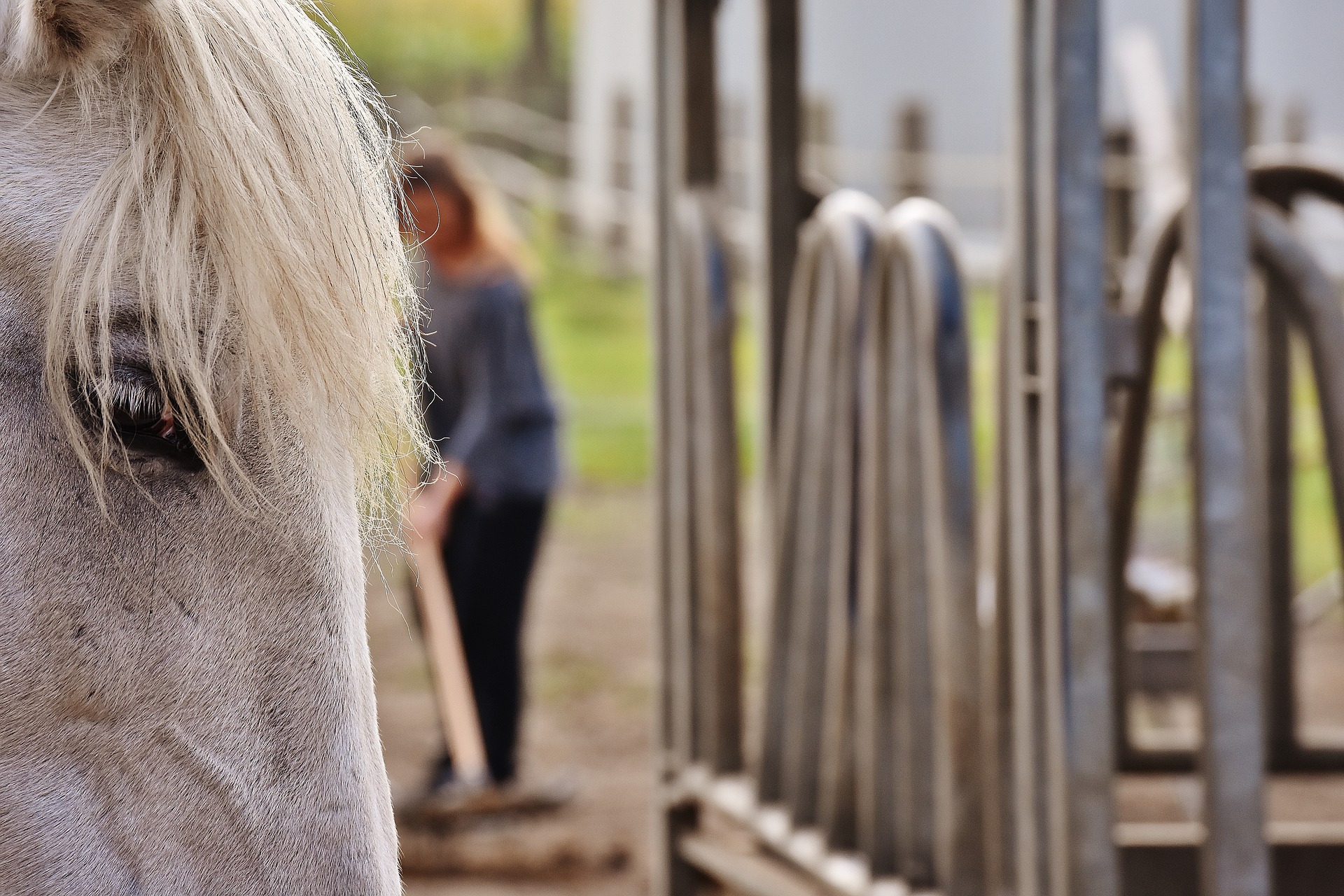BEDDING TYPES & MUCKING OUT
REGIMEN IN HORSE STALLS

Written by Performance Horse Nutrition
Mucking out stalls is an endless chore for anyone who owns or manages stabled horses. During the winter, stall cleaning seems never ending as horses are indoors more and barns are closed up to keep the weather out and the warmth in. In doing this we increase the ammonia and fine dust particulates in the air. This can be detrimental to the horse’s respiratory tract as it is very sensitive to airborne particles and ammonia. Studies have shown that stabling is associated with increased airway inflammation and the persistence of upper airway inflammation in young horses (Holcombe et al., 2001). Even horses that were deemed clinically healthy and performed well showed evidence of inflammatory airway disease when housed in a stable environment (Gerber, 2003). The health and well being of horses depends on healthy lungs. Poor air quality can contribute to various respiratory disorders in horses and in the people who care for them.
Among other factors, bedding has an influence on the climate in a stable in terms of airborne particle generation, water-binding capacity, and ammonia binding. Suboptimal air quality and hygiene problems within a stable are often linked to bedding and bedding management. Many gases are generated in equine housing establishments. Ammonia is the most important gas in the stable air with respect to animal health, particularly of the respiratory tract.
Scientists recently compared the generation of ammonia gas and fine dust production in horse stalls under different conditions. In three separate experiments, different bedding materials and different mucking regimes were tested. The three bedding materials were wheat straw, straw pellets and wood shavings. The three mucking regimes that were evaluated over a 2 week period were: 1. No mucking, 2. Complete mucking removing urine and feces, 3. Incomplete mucking removing feces only.
The results of their study showed that bedding with wheat straw had advantages over both straw pellets and wood shavings with regard to ammonia concentration. When evaluating the management of bedding, the researchers concluded that mucking out both urine and feces from bedding daily significantly increased the gaseous ammonia concentrations and fine dust particulates in the air. No mucking and only mucking out feces significantly reduced ammonia concentrations and no mucking significantly reduced airborne dust compared to either mucking out regime. Based on these results, it could be concluded that we should dispense with daily mucking out. This however would not be advisable as mucking regimen is not just dependent on the ammonia and dust particle concentrations; other factors have to be taken into account. For example, the growth of pathogenic bacteria and fungi would certainly be favored if the same bedding were maintained for some weeks, which, in turn, would have a negative effect on animal health. To conclude, it is advantageous to carry out stable chores when there are no horses in the barn because activities such as mucking out, and sweeping caused both increased amounts of ammonia and increased airborne particle concentrations. Where possible it is also recommended horses are housed outside with constant clean airflow.
Holcombe, S. J., C. Jackson, V. Gerber, A. Jefcoat, C. Berney, S. Eberhardt, and N. E. Robinson. 2001. Stabling is associated with airway inflammation in young Arabian horses. Equine Vet. J. 33:244–249.
Gerber, V., N. E. Robinson, S. Luethi, E. Marti, B. Wampfler, and R. Straub. 2003. Airway inflammation and mucus in two age groups of asymptomatic well-performing sport horses. Equine Vet. J. 35:491–495.
Fleming, K., E. F. Hessel, and H. F. A. Van den Weghe. 2009. Gas and particle concentrations in horse stables with individual boxes as a function of the bedding material and the mucking regimen. J Anim Sci 2009.87:3805-3816.

